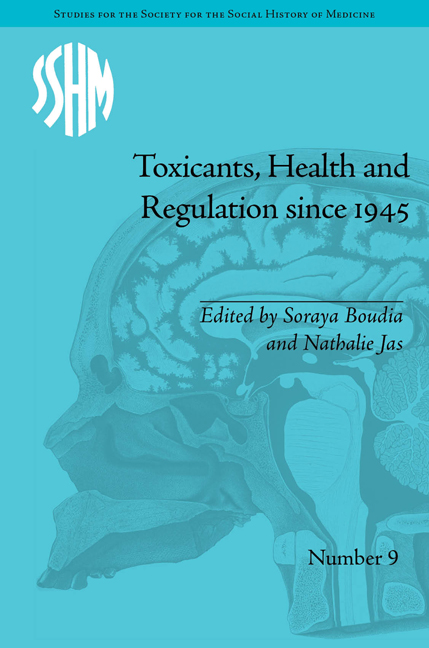Book contents
- Frontmatter
- Contents
- Acknowledgements
- List of Figures and Tables
- List of Contributors
- Introduction
- 1 The Cold War Over the Worker's Body: Cross-National Clashes Over Maximum Allowable Concentrations in the Post-World War II Era
- 2 Adapting To ‘Reality’: The Emergence of an International Expertise On Food Additives and Contaminants in the 1950s and Early 1960s
- 3 From Threshold to Risk: Exposure to Low Doses of Radiation and its Effects On Toxicants Regulation
- 4 ‘License To Expose’? Occupational Exposure Limits, Scientific Expertise and State in Contemporary France
- 5 Chemical Infrastructures of the St Clair River
- 6 Managing an Everlastingly Polluted World: Food Policies And Community Health Actions in the French West Indies
- 7 Chernobyl Empowerment? Exporting ‘Participatory Governance’ to Contaminated Territories
- Notes
- Index
7 - Chernobyl Empowerment? Exporting ‘Participatory Governance’ to Contaminated Territories
- Frontmatter
- Contents
- Acknowledgements
- List of Figures and Tables
- List of Contributors
- Introduction
- 1 The Cold War Over the Worker's Body: Cross-National Clashes Over Maximum Allowable Concentrations in the Post-World War II Era
- 2 Adapting To ‘Reality’: The Emergence of an International Expertise On Food Additives and Contaminants in the 1950s and Early 1960s
- 3 From Threshold to Risk: Exposure to Low Doses of Radiation and its Effects On Toxicants Regulation
- 4 ‘License To Expose’? Occupational Exposure Limits, Scientific Expertise and State in Contemporary France
- 5 Chemical Infrastructures of the St Clair River
- 6 Managing an Everlastingly Polluted World: Food Policies And Community Health Actions in the French West Indies
- 7 Chernobyl Empowerment? Exporting ‘Participatory Governance’ to Contaminated Territories
- Notes
- Index
Summary
Introduction
Citizen participation in the management of science and technology became a key component of public and collective action. The participatory ideal is now mobilized at almost every level, by NGOs, watchdog groups, trade unions, by techno-entrepreneurs, science policy proponents, EU bureaucrats and even by candidates to presidential elections.
Since the end of the 1980s, the STS field has played a pioneer role in the promotion of public participation as a modernized way of governing science and technology. Most of the literature produced within this context was based on the hypothesis that more public participation would necessarily lead to the empowerment of public and to a democratization of science. This paper questions such correlation. Empowerment is analysed, in this frame, as a vague, even ‘powerless’ notion (despite the idea of power it incorporates), given the fact that it was largely ‘normalized’ by international bodies and industrial actors, thus differing from its first theorizations by the social movements (social workers, feminists, development NGOs, trade union movements ...) as a means to transform the social order and power relations. In line with recent critical work calling for a deconstruction of institutional discourses, for a critical analysis of the official framings, and for a re-evaluation of the participatory ‘ideal’ in relation to the politico-economic context that gave birth to it, this paper takes seriously the cases in which public participation does not necessarily allow a democratization of science, but rather serves to increase the social acceptability of a controversial innovation,6 to restore public trust vis-à-vis science, to dictate narrow frames of debate’ on technological innovation8 or to shift towards a lesser commitment of the state in public health protection, thanks to an increased commitment by ‘empowered citizens'.
- Type
- Chapter
- Information
- Toxicants, Health and Regulation since 1945 , pp. 135 - 158Publisher: Pickering & ChattoFirst published in: 2014



